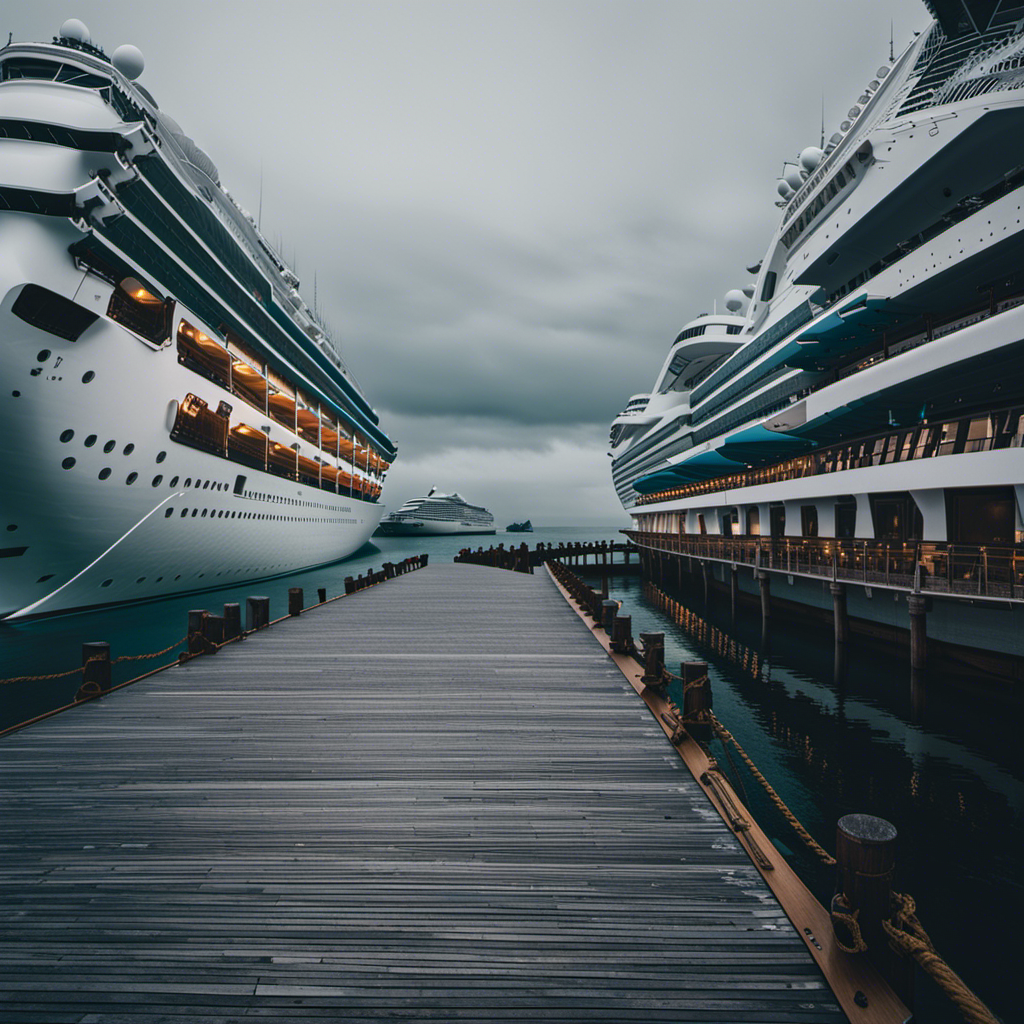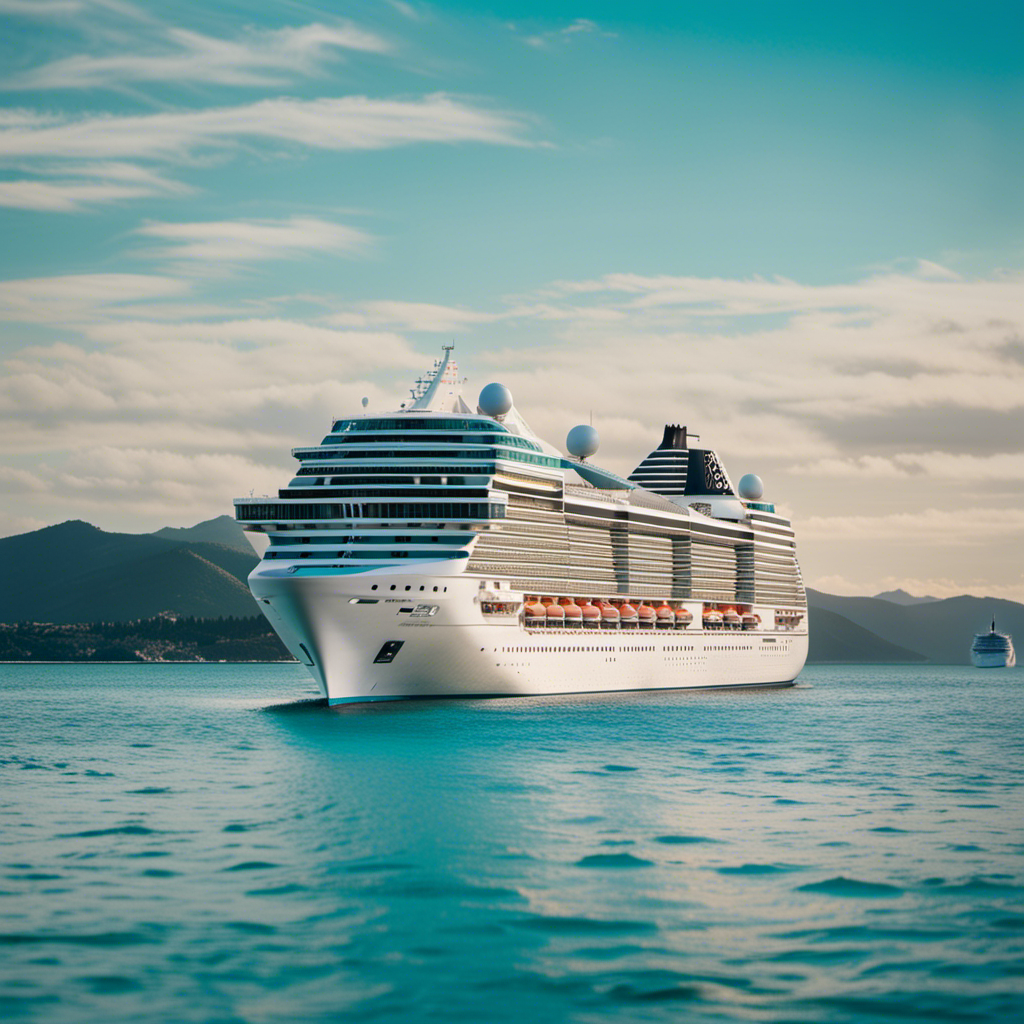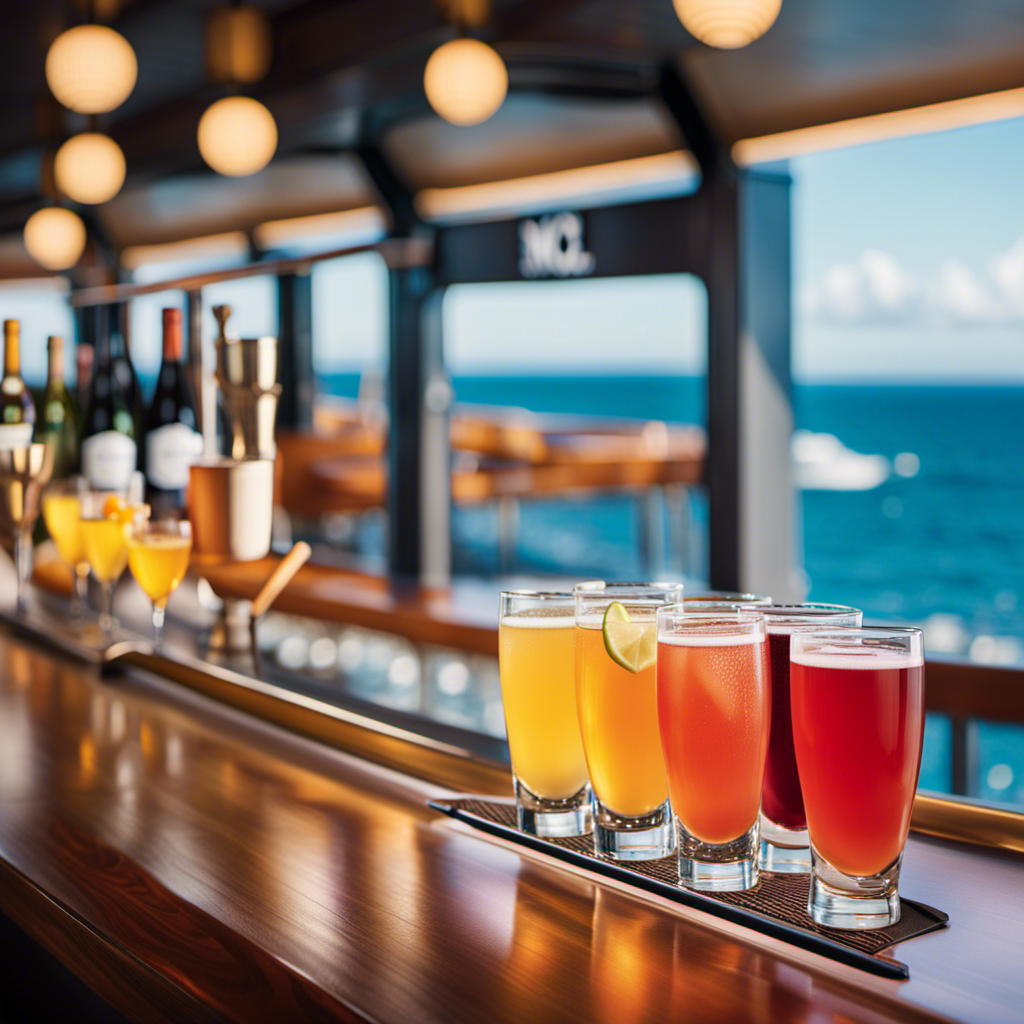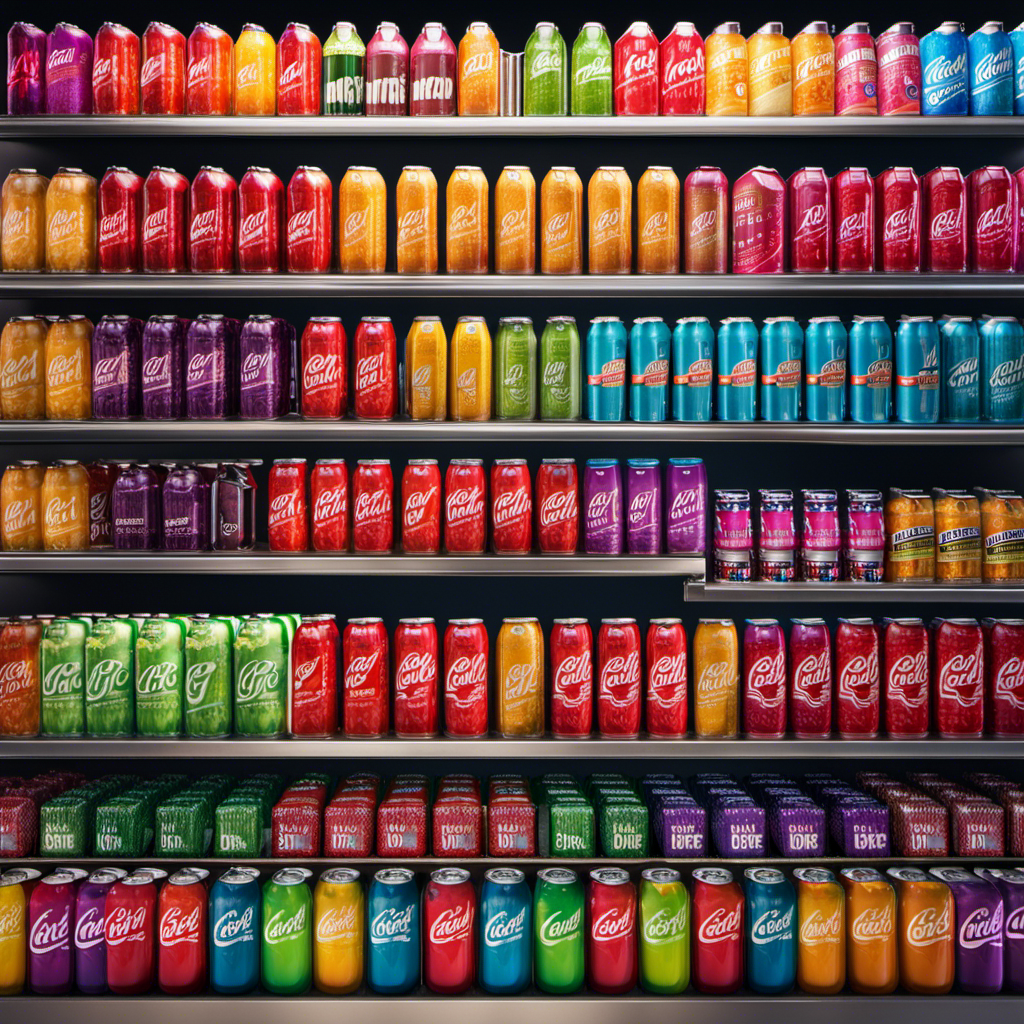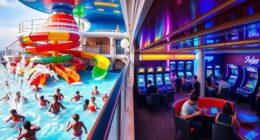As an individual who harbors a profound affection for travel and cruising, I have eagerly anticipated the restart of cruise operations amidst the pandemic. However, the current reality diverges significantly from the excitement I once felt.
The financial toll on the cruise industry has been devastating, with losses reaching unimaginable heights. Carnival Cruise Line, Royal Caribbean Group, and Norwegian Cruise Line Holdings Ltd. have all reported staggering figures, leaving the industry in a state of financial turmoil.
Join me as we delve into the depths of these losses and explore the long road to recovery for the cruise industry.
Key Takeaways
- Cruise lines experienced significant financial losses due to the suspension of sailings during the pandemic, with Carnival Cruise Line alone cancelling over 2,600 cruises, affecting 4 million passengers.
- The revenue loss was not only from ticket refunds but also from ongoing expenses to maintain the ships, leading to negative net profits reported by cruise companies going back to at least 2017.
- Carnival Corporation, which operates multiple cruise lines, reported a total loss of -$12.2 billion in 2020 and the first quarter of 2021, offsetting previous years’ profits of $8.75 billion.
- Royal Caribbean Group’s revenue for 2020 was only $2.2 billion compared to nearly $11 billion in 2019, resulting in a net income loss of -$6.9 billion during the pandemic and wiping out profits from the previous three years.
The Massive Revenue Losses for Cruise Lines
I can’t believe the massive revenue losses that cruise lines have experienced due to the suspension of sailings during the pandemic. The impact on employment has been significant, with many cruise companies having to lay off or furlough employees.
The future prospects for the cruise industry are uncertain, as the ongoing pandemic continues to affect travel and tourism. While some cruises have resumed in certain regions, the limited operations and staggered return have greatly affected revenue. The three major cruise companies reported a total loss of -$4.5 billion in the first quarter of 2021 alone.
It is clear that the financial toll on the industry is devastating, and it will take a long time for the cruise industry to recover fully.
Carnival Corporation’s Financial Meltdown
Carnival Corporation’s fleet reduction did not alleviate high expenses and resulted in significant losses. Despite reducing their fleet, Carnival Corporation still faced substantial expenses without any revenue. The impact on Carnival Corporation’s financial recovery has been detrimental not only to the company itself but also to the cruise industry economy as a whole.
With a total revenue of $5.6 billion in 2020, offset by pandemic-related expenses, Carnival Corporation reported a staggering total loss of -$12.2 billion during 2020 and the first quarter of 2021. This has had a ripple effect on the industry, as the largest cruise market, the United States, continues to face revenue loss as trips remain suspended.
The devastating financial toll on Carnival Corporation has significantly impacted the cruise industry’s ability to recover and poses a long road ahead for both the company and the industry as a whole.
Royal Caribbean Group’s Devastating Losses
Royal Caribbean Group faced significant losses due to the suspension of sailings and ongoing expenses without revenue. The impact on their financial stability has been severe, with revenue plummeting from nearly $11 billion in 2019 to only $2.2 billion in 2020. This resulted in a net income loss of -$6.9 billion, wiping out profits from the previous three years.
To recover from these devastating losses, Royal Caribbean Group has implemented a recovery plan focused on several key areas. They are working to enhance health and safety protocols, develop innovative technologies to minimize the risk of future disruptions, and strengthen their financial position through cost-cutting measures and capital raising initiatives.
However, the future of the cruise industry’s financial stability remains uncertain as the industry continues to face challenges in the form of ongoing travel restrictions and consumer hesitancy.
Norwegian Cruise Line Holdings Ltd.’s Financial Nightmare
Norwegian Cruise Line Holdings Ltd.’s ongoing expenses without sufficient revenue have led to a financial nightmare for the company. Like other cruise lines, Norwegian Cruise Line Holdings Ltd. has been severely impacted by the ongoing losses in the cruise industry.
The suspension of sailings due to the pandemic has resulted in a significant decline in revenue for the company. In 2020, Norwegian Cruise Line Holdings Ltd. reported a revenue of $1.3 billion, leading to a net income loss of -$4.0 billion for the year. This is a stark contrast to the net income of $3.3 billion the company had achieved between 2016 and 2019.
The ongoing expenses of maintaining the fleet without sufficient revenue have put Norwegian Cruise Line Holdings Ltd. in a precarious financial position. The company’s struggles reflect the challenges faced by the entire cruise industry during these unprecedented times.
The Continuing Financial Crisis in the Cruise Industry
As an avid traveler, I am concerned about the ongoing financial crisis in the cruise industry and the long-term implications it may have.
The cruise industry has been severely impacted by the pandemic, with cruise lines experiencing significant revenue losses due to the suspension of sailings. The three major cruise companies, including Carnival Corporation, Royal Caribbean Group, and Norwegian Cruise Line Holdings Ltd., have reported massive losses, with net income going into the negative.
To recover in the long term, cruise lines are exploring various strategies such as reducing expenses, diversifying itineraries, and enhancing health and safety protocols. Additionally, government support and financial assistance have been crucial in helping the industry survive during this challenging period.
However, the full extent of the financial impact and the effectiveness of these recovery strategies remain to be seen. The cruise industry faces a long road to recovery, and it will require sustained efforts and collaboration to bounce back.
Frequently Asked Questions
How Many Cruises Did Carnival Cruise Line Cancel During the Pandemic and How Many Passengers Were Affected?
During the pandemic, Carnival Cruise Line cancelled over 2,600 cruises, affecting 4 million passengers. The financial toll was significant, with losses not just from refunds but also ongoing expenses.
What Were the Total Revenue and Net Income Losses for Carnival Corporation in 2020 and the First Quarter of 2021?
In 2020 and Q1 2021, Carnival Corporation suffered significant financial losses. Total revenue was $5.6 billion, while the net income loss amounted to -$12.2 billion. These losses were a result of the impact of cruise cancellations on passengers.
How Many Ships Does Royal Caribbean Group Own and What Was Their Revenue for 2020 Compared to 2019?
In 2020, Royal Caribbean Group’s revenue plummeted to $2.2 billion from nearly $11 billion in 2019, resulting in a massive financial blow. The impact of cruise suspensions on their finances has been devastating.
What Were the Net Income Losses for Norwegian Cruise Line Holdings Ltd. in 2020 and How Did It Compare to Previous Years?
In 2020, Norwegian Cruise Line Holdings Ltd. reported a net income loss of -$4.0 billion, a significant decline compared to its net income of $3.3 billion between 2016-2019. The impact of cruise suspensions greatly affected the company’s financial health.
What Was the Total Loss Reported by the Three Major Cruise Companies in the First Quarter of 2021 and What Is the Current Financial Outlook for the Cruise Industry?
The three major cruise companies reported a total loss of -$4.5 billion in the first quarter of 2021. The current financial outlook for the cruise industry is challenging, but recovery strategies are being implemented to overcome the ongoing losses.
Claire, a creative soul with an unquenchable thirst for storytelling, is an integral part of the Voyager Info team. As a dedicated writer, she weaves captivating narratives that transport readers to enchanting cruise destinations and beyond.
Claire’s love affair with writing began at an early age when she discovered the magic of words and their ability to craft worlds and emotions. Her innate curiosity led her to explore various literary genres, but it was travel writing that truly captured her heart. Drawing inspiration from her own globetrotting adventures and encounters with diverse cultures, Claire embarked on a journey to become a travel writer par excellence.

